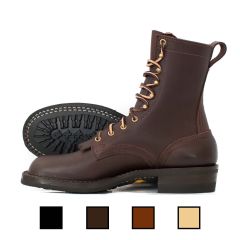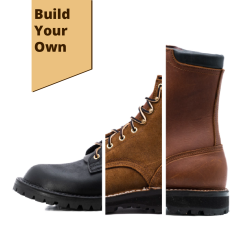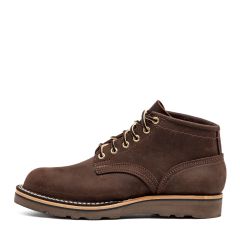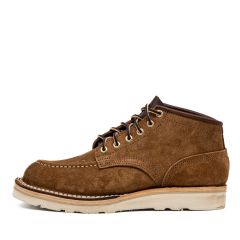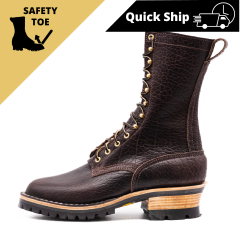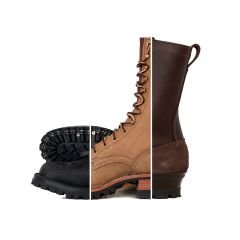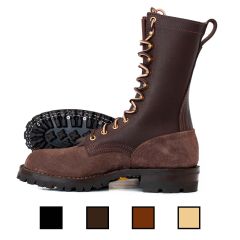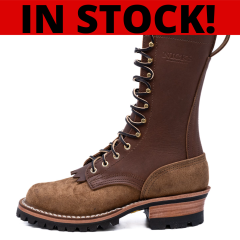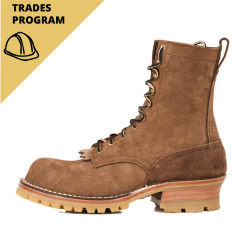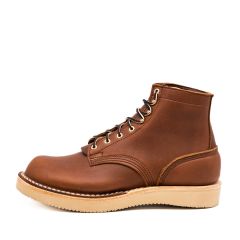Boots For Winter
Winter Boot Essentials
Waterproofing
Keeping your feet dry is paramount in winter to avoid discomfort and the risk of cold-related conditions like frostbite. Look for boots that offer either waterproof or water-resistant capabilities. This means selecting boots constructed with waterproof materials like leather treated with a waterproofing compound or boots designed with an internal waterproof membrane.
Insulation
Proper insulation is what stands between you and the biting cold. Opt for boots with high-quality insulation materials. These materials trap and retain your body heat, offering warmth without adding unnecessary bulk to your footwear. This is crucial for maintaining mobility and comfort, whether on a long winter hike or just commuting to work.
Traction
Winter conditions can quickly turn any surface into a slippery hazard. Look for boots with slip-resistant outsoles and deep lugs to safely navigate icy streets and snowy paths. These features provide stability and grip, reducing the risk of falls and injuries.
Support And Comfort
The right pair of winter boots should offer more than just warmth and dryness; they should also provide support and comfort. Look for boots with structured support, cushioned footbeds, and enough room to accommodate thick winter socks without compromising toe movement. This ensures all-day comfort and reduces fatigue.
Durability
Investing in durable boots means enjoying many seasons of use. Nicks Boots exemplifies durability, utilizing high-quality materials and solid construction techniques to ensure their boots can withstand the rigors of winter after winter. Whether it's the premium leather uppers, robust stitching, or reliable outsoles, our boots are built to last, representing a wise investment for anyone serious about winter preparedness.
The Importance Of Waterproofing
- Keeping Your Feet Dry: Proper waterproofing in winter boots prevents moisture from seeping in. Dry feet are essential for comfort and safety in cold and wet conditions.
- Enhancing Comfort And Warmth: Waterproof boots use technology to block external moisture while allowing sweat to escape, keeping your feet dry and cozy.
- Lightweight And Durable: Waterproof boots stay light and provide insulation, preventing fatigue during winter activities. They also last longer by resisting damage from moisture and odors.
- Overall Protection: Investing in waterproof winter boots is not just about staying dry - it's about maintaining warmth, comfort, energy levels, and the longevity of your footwear.
Boot Care Tips
- Regular Cleaning: After each use, brush off dirt and debris with a soft brush or cloth. For stubborn dirt, use mild soap and a damp cloth. Keeping boots clean prevents material breakdown and preserves waterproof coatings.
- Drying Your Boots: Air dry boots at room temperature. Remove insoles and laces, open up boots, and avoid direct heat sources. Use newspaper or a boot dryer to speed up drying without damage.
- Waterproofing Treatments: Apply waterproofing spray or wax periodically to enhance moisture resistance. Choose products based on your boot's material (leather, suede, synthetic). Reapply after cleaning to maintain water repellency.
- Storage: Store boots in a cool, dry place away from sunlight. Use a breathable bag or box to protect from dust and moisture. Avoid storing damp or dirty boots to prevent mold growth and material degradation.
- Inspecting For Damage: Regularly check for wear and tear, such as loose soles, cracked leather, or tears. Address issues promptly to prevent worsening. Consider professional repair for serious damage.
Following these tips will help preserve the quality and functionality of your Nicks Boots winter boots for years to come. A little effort in maintenance goes a long way in keeping your boots ready for the winter season.

Durability Essentials For Winter Boots
Material Matters
- Choose between durable leather or synthetic materials for long-lasting wear.
- Care for leather to maintain durability; synthetic options require less upkeep.
Construction Quality
- Opt for stitched construction over glued for increased durability.
- Look for details like Goodyear welting and reinforced stitching for sturdier boots.
Design Features For Durability
- Search for boots with reinforced toes and heel caps for added protection.
- Robust outsoles and removable insoles enhance longevity and wear resistance.
Maintenance Importance
- Regular cleaning, drying, and conditioning are key to sustaining durability.
- Proper care ensures boots withstand the elements and serve you well season after season.

Sole Design And Slip Resistance
One of the most critical features to consider when selecting high-quality winter boots is the sole's design and its slip resistance. Winter conditions often lead to slippery surfaces, from ice on city sidewalks to compacted snow on hiking trails. Therefore, the sole of your winter boot can significantly impact your safety and comfort during cold weather activities.
Understanding Sole Design
The design of a winter boot's sole plays a pivotal role in its ability to navigate treacherous terrain. Look for soles with deep, wide lugs—the indentations in the sole—which provide better traction by biting into the snow and ice. The spacing of these lugs also matters; wider spaces prevent snow from accumulating between them, maintaining their grip on slippery surfaces.
Materials Matter
The material of the sole significantly affects its slip resistance. Rubber is a common choice for winter boots because it remains flexible in cold temperatures, allowing it to maintain traction better than harder materials that may become stiff and less grippy. Some soles incorporate advanced materials or compounds designed to provide additional grip on ice, further enhancing safety.
Advanced Technologies
In recent years, footwear technology has significantly enhanced slip resistance. Some winter boots now feature outsoles with articulating grips or microspikes that can improve stability on ice. Another innovative technology uses thermochromic materials that change color at freezing temperatures, alerting the wearer to slippery conditions.
Assessing Your Needs
When choosing boots for winter, consider the typical conditions you'll face and the level of activity you'll be engaging in. If you're in a region with heavy snowfall but minimal ice, a boot with deep lugs and a flexible sole might be sufficient. For those in icier, urban areas, options with advanced grip technologies or the ability to add external grip aids like crampons could be more appropriate.
A Note On Grip Aids
For those frequently encountering icy conditions, investing in external grip aids attached to boots may be wise. These can range from simple rubber oversoles with embedded spikes to more advanced, removable microspike systems. These aids provide extra security in treacherous conditions and can be easily removed when not needed.
So, as the temperatures fall, equip yourself with boots that can withstand the elements and the test of time. Check out Nicks Boots’ new arrivals today!
Frequently Asked Questions
What are the best materials for winter boots?
The best winter boot materials are waterproof leather, nylon, and rubber. These materials provide the durability, water resistance, and insulation necessary for harsh winter conditions.
Why is waterproofing important in winter boots?
Waterproofing is crucial in winter boots to keep feet dry from snow and water. It helps maintain warmth and comfort and prevent cold-related foot problems like frostbite.
How do I properly size winter boots?
When sizing winter boots, it's essential to consider the thicker socks you might wear. Generally, ordering a half size to a full size larger than your normal shoe size is recommended to accommodate these socks and ensure proper circulation.
Are insulated boots necessary for all winter climates?
Insulated boots are not necessary for all winter climates but are highly recommended for areas with low temperatures and heavy snowfall. The insulation helps in keeping feet warm in extremely cold conditions.
What is the difference between men's and women's winter boots?
The primary difference between men's and women's winter boots is their size and fit. Women's boots are designed to accommodate narrower feet and lower calves, while men's boots are broader and built for larger foot shapes.
How can I maintain and clean my winter boots?
To maintain and clean your winter boots, regularly brush off mud and debris, use a water and stain repellent, and dry them at room temperature away from direct heat. Conditioning the leather can also help to preserve the material.
What features should I look for in a good pair of winter boots?
Key features include waterproofing, insulation, a non-slip sole, and durable construction. Additional comfort elements like padded insoles and supportive arches can also enhance wearability.
